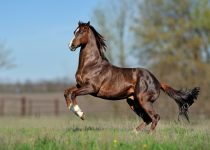The Lusitano: A Dance of Elegance and Valor
The Lusitano, a horse breed of ancient lineage, is a magnificent creature that has captured the hearts of equestrians worldwide. Known for their exceptional athleticism, agility, and temperament, these horses are a testament to the beauty and power of nature. But what makes the Lusitano so special? Let’s delve into the fascinating world of this remarkable breed.

History of the Lusitano
The Lusitano’s history is as captivating as the breed itself. Originating from the Iberian Peninsula, these horses have been around for over 5,000 years. Their ancestors were highly prized war horses, known for their courage and agility.
The breed’s name, Lusitano, is derived from Lusitania, the ancient Roman name for the region that is now Portugal. Over the centuries, the Lusitano has been shaped by the needs and desires of the people who bred them. From war horse to bullfighting horse to dressage star, the Lusitano has proven its versatility time and again.
The Lusitano in War
In ancient times, the ancestors of the Lusitano were used as war horses. Their agility, speed, and courage made them ideal for the battlefield. They were known to be intelligent and responsive, able to understand and execute complex commands under the stress of combat.
These traits made them highly sought after by military leaders. The Romans, impressed by the horses’ abilities, used them extensively in their campaigns. The Lusitano’s reputation as a superior war horse continued into the Middle Ages, where they were used by knights in battle.
The Lusitano in Bullfighting
With the advent of firearms, the need for war horses declined. However, the Lusitano found a new role in the bullfighting arenas of Portugal and Spain. Their agility, bravery, and quick reflexes made them ideal for this dangerous sport.
Even today, the Lusitano is still used in Portuguese-style bullfighting, where the horse’s skill and agility are as important as the bullfighter’s. The Lusitano’s ability to quickly change direction and speed, combined with their natural bravery, makes them a spectacular sight in the bullfighting arena.
Characteristics of the Lusitano
The Lusitano is a horse of medium size, typically standing between 15.2 and 16.2 hands high. They are well-muscled, with a strong, arched neck and powerful hindquarters. Their head is of medium length, with a broad forehead and expressive eyes.
One of the most distinctive features of the Lusitano is their movement. They are known for their elevated, floating trot and their ability to collect and extend with ease. This makes them particularly suited to dressage, where their natural athleticism and grace truly shine.
Temperament
Lusitanos are known for their intelligent, willing, and gentle nature. They are quick learners and eager to please, making them a joy to train. Their sensitivity and responsiveness require a rider who is patient and understanding, as they do not respond well to harsh treatment.
Despite their gentle nature, Lusitanos are also known for their bravery and spirit. This combination of sensitivity and courage makes them a unique and rewarding breed to work with.
Colors
Lusitanos can be found in a variety of colors, although they are most commonly seen in shades of gray. Other colors include bay, chestnut, black, and palomino. Regardless of their color, Lusitanos always have a certain elegance and beauty that sets them apart.
Caring for a Lusitano
Lusitanos, like all horses, require regular care and attention to ensure their health and happiness. This includes a balanced diet, regular exercise, and routine veterinary and farrier care.
Due to their active nature and athletic build, Lusitanos thrive on a diet that is high in quality protein and fiber. They also benefit from regular turnout and exercise to keep their minds and bodies in top condition.
Grooming
Regular grooming is not only essential for maintaining a Lusitano’s coat and skin health, but it also provides an excellent opportunity to bond with your horse. Lusitanos have a thick mane and tail that require regular brushing to prevent tangles and knots.
Additionally, their hooves should be cleaned daily to prevent the buildup of dirt and debris, which can lead to infections and other hoof problems. Regular baths will also keep your Lusitano looking their best, especially if they are a lighter color.
Training
Training a Lusitano can be a rewarding experience, thanks to their intelligent and eager-to-please nature. They excel in a variety of disciplines, from dressage and show jumping to driving and working equitation.
However, their sensitivity and intelligence mean they require a trainer who is patient, understanding, and uses positive reinforcement techniques. With the right approach, a Lusitano can be a true partner in whatever equestrian endeavor you choose.
Conclusion
The Lusitano is a breed of many talents and a heart full of courage and spirit. Whether you’re an experienced equestrian looking for a new challenge or a novice rider drawn to their beauty and grace, the Lusitano has something to offer everyone.
From their rich history to their unique characteristics, it’s clear that the Lusitano is more than just a horse – it’s a testament to the enduring bond between humans and horses, a bond that transcends time and continues to inspire us today.


